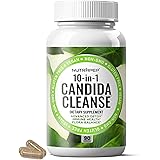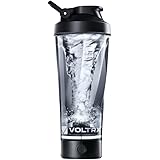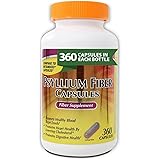Your Essential Keto Food List: Navigating a Ketogenic Diet with Ease
Embarking on a new eating plan, especially one as distinct as the ketogenic diet, often presents a unique set of challenges. The idea of reimagining your entire diet, shifting away from a conventional food pyramid, can certainly feel overwhelming at first. As was highlighted in the video above, this initial feeling is commonly experienced by nearly everyone who begins their keto journey. The good news is that you are not expected to create your new diet from scratch; numerous resources are available to guide you.
One of the most valuable starting points for anyone looking to understand what foods are integral to this lifestyle is a comprehensive keto food list. Such a guide is indispensable for calculating your macros, preparing your shopping lists, and planning daily meals. This structured approach helps your body efficiently transition into a ketogenic state, transforming it into a more effective fat-burning machine. This article will expand upon the foundational principles of keto eating, detailing various food groups and offering practical advice to help you succeed.
1. Fueling Your Body: Essential Fats and Oils for the Keto Diet
The ketogenic diet is primarily defined by its high fat content, and understanding which fats to prioritize is key. Not all fats are created equal, and discerning between beneficial and detrimental options is crucial for overall health and maintaining ketosis. Think of fats as the premium fuel for your body’s new engine; selecting the right type ensures smooth operation and optimal energy production.
Saturated fats, for instance, are freely eaten and play a significant role. These include staples such as butter, ghee (clarified butter), coconut oil, MCT oil, and animal-derived fats like tallow and lard. They are excellent choices for high-heat cooking methods such as frying or sautéing, and some, like coconut oil and MCT oil, are frequently incorporated into beverages like the popular “keto-proof coffee” for an energy boost. These fats provide steady energy and help keep you feeling full.
Monounsaturated fats are also highly valued and can be consumed regularly. Sources include cold-pressed olive oil, flax oil, avocado oil, and macadamia nut oil. These oils are best used in dressings, sauces, or simply drizzled over prepared foods to enhance flavor and nutrient intake, as their delicate structures can be compromised by high heat. Such fats are known for their heart-healthy properties and their contribution to overall well-being.
Naturally occurring polyunsaturated fats, which are found in animal proteins and fatty fish, offer considerable nutritional benefits and should be embraced. However, a significant distinction must be made regarding processed polyunsaturated and trans fats, which are often found in products like margarine spreads. These industrial fats should always be avoided, as they are known to contribute to inflammation and can be detrimental to health, much like using a low-quality, contaminated fuel in a high-performance vehicle.
Achieving a healthy balance of omega fatty acids is another important consideration. Consumption of wild salmon, tuna, trout, and shellfish is encouraged for their rich omega-3 content, or a small fish oil supplement may be considered. Conversely, intake of nut or seed-based foods should be monitored, as many are high in inflammatory omega-6s, which can disrupt the body’s delicate balance if consumed in excess. A mindful approach to fat consumption is therefore paramount for optimal health on a keto diet.
2. Building Blocks: Navigating Protein Sources on Your Keto Food List
Proteins serve as essential building blocks for your body, but on a ketogenic diet, their consumption must be carefully moderated. While indispensable, excessive protein intake can be converted into glucose through a process called gluconeogenesis, which can lower ketone levels and potentially hinder the fat-burning process. This means that proteins, while important, are not meant to be eaten in unlimited quantities; they are a supportive cast member, not the main star, in the keto narrative.
When selecting meats, the emphasis is placed on quality and fat content. Wherever possible, organic, pasture-raised, and grass-fed options are preferred for their superior nutritional profiles. For beef, fattier cuts like ribeye are often recommended, and for ground beef, blends with higher fat ratios such as 85/15 or 80/20 are ideal. The same principle applies to pork; fatty cuts of ground pork, pork loin, pork chops, and ham are suitable choices. Bacon is a keto favorite, but labels must be checked to ensure no added sweeteners like brown sugar are present. Cured pork products, such as many sausages, frequently contain hidden sugars and processed ingredients and are generally best avoided.
Wild-caught fish is another excellent protein source, with fattier varieties being particularly beneficial. Fish such as catfish, cod, flounder, halibut, mackerel, mahi-mahi, salmon, snapper, trout, and tuna are all good choices that provide valuable omega-3s. Other seafood options like clams, oysters, lobster, crab, scallops, mussels, and squid also provide protein, though some may contain carbohydrates, so awareness of portion sizes is important. One of the most affordable and versatile protein sources available is whole eggs, especially free-range eggs. Each egg typically contains 6 grams of protein and 5 grams of fat, making them an ideal and nutrient-dense food that can be prepared in countless ways, from scrambled to deviled.
For poultry, dark meat options like chicken thighs, duck, quail, and pheasant are favored over leaner white meat due to their higher fat content. Similarly, when selecting other meats such as veal, goat, lamb, and turkey, fatty cuts are always the preferred option. Offal and organ meats, including heart, liver, kidney, and tongue, are highly nutritious, offering a dense supply of vitamins and minerals in addition to protein. For non-meat protein sources, natural unsweetened nut butters, particularly those with higher fat content like almond and macadamia nut butter, can be included in moderation. Nut and seed flours are also commonly used in keto baking, but mindful consumption is advised to prevent over-carb loading.
3. Greens and Berries: Selecting Low-Carb Produce for Your Keto Diet
Produce, whether fresh or frozen, is an indispensable component of the ketogenic diet and essential for general health. However, a significant distinction must be made between high-carb and low-carb options, as many common fruits and vegetables are naturally high in sugars. A simple and effective guideline is to primarily focus on above-ground vegetables, which typically have a lower carbohydrate count compared to root vegetables.
An abundance of green, leafy vegetables can be loaded onto your plate. These include broccoli, cauliflower, cabbage, green beans, Swiss chard, romaine lettuce, and spinach, all of which provide crucial vitamins, minerals, and fiber without significantly impacting your daily carb limit. These vegetables are like nutrient-dense sponges, soaking up essential elements your body needs while contributing very few net carbohydrates. They are versatile, adding bulk and flavor to meals, and can be prepared in various ways to prevent meal fatigue.
Conversely, certain higher-carb vegetables should be consumed in limited quantities. These include items like baby bella mushrooms, squash, parsnips, beets, and garlic. Nightshades, such as tomatoes, bell peppers, and eggplant, also require moderation due to their carbohydrate content, and some individuals may choose to limit them further for potential inflammatory reasons. The goal is to maximize nutrient intake from vegetables while carefully managing carbohydrate grams.
When it comes to fruits, a very careful approach is needed due to their natural sugar content. Citrus fruits and berries, such as raspberries, blueberries, and blackberries, can be eaten with strict moderation, as even these lower-carb fruits can quickly add up to your daily limit. Think of them as small, occasional treats rather than staple foods. Sweet and starchy produce, exemplified by sweet potatoes and bananas, should be entirely avoided on a ketogenic diet, as their high sugar and starch content will quickly knock your body out of ketosis. For a more detailed exploration of vegetable choices, additional resources like “The Best Low Carb Vegetables for Keto” can provide further guidance.
4. Creamy Indulgences: Dairy Options for Your Ketogenic Food List
Dairy products can be a delicious and useful part of a ketogenic diet, but careful selection is paramount to maintain your macronutrient balance. The general rule of thumb when shopping for dairy is to always opt for full-fat items, and whenever possible, choose organic and raw versions. This preference is rooted in the fact that highly processed dairy products can contain two to five times the amount of carbohydrates found in their raw or organic counterparts, and these hidden carbs can quickly accumulate throughout the day, stealthily pushing you over your limit.
A range of full-fat dairy items is commonly enjoyed on a keto diet. These include heavy whipping cream, Greek yogurt, cream cheese, half-and-half, and mascarpone, all of which contribute satisfying creaminess and fat to meals and beverages. These products are often incorporated into sauces, desserts, or added to coffee to boost fat intake. They are versatile staples that can make the diet feel more indulgent and less restrictive.
When it comes to cheese, a nuanced approach is beneficial. Moderate amounts of soft cheeses, such as mozzarella, Monterey Jack, and Brie, are generally acceptable. However, harder cheeses, including aged cheddar, parmesan, feta, and Swiss, tend to be better choices as they are typically lower in carbohydrates. These hard cheeses are often enjoyed as snacks, grated over meals, or included in fat bombs. The aging process often reduces the lactose content, which contributes to their lower carb count.
It is important to actively monitor your dairy consumption, particularly when meals are already rich in protein, to ensure your macros remain balanced. If a plateau in weight loss is experienced, or if progress seems to slow, a temporary reduction in dairy intake might be considered. For some individuals, even full-fat dairy can contribute to stalls, making it a potential area for adjustment. Listening to your body and adjusting your dairy intake based on your individual response is a key aspect of successful keto living.
5. Savor the Flavor: Keto-Friendly Seasonings and Condiments
To ensure that keto meals are not only nutritious but also enjoyable, the judicious use of seasonings, sauces, and condiments is essential. The good news is that most spices, along with sea salt and pepper, can be used freely without significant concern for tracking. These flavor enhancers are the artists’ brushes of the kitchen, adding depth and character to every dish. However, if an unusually large quantity of a specific spice is being used in a recipe, it is prudent to note its carbohydrate content, as even spices contain small amounts that can add up.
A critical point of vigilance lies with prepackaged spice blends, many of which contain hidden sugars, starches, and other fillers. These additives can quickly undermine your keto efforts, much like a tiny leak in a boat can eventually cause it to sink. Always inspect ingredient labels carefully to avoid these hidden carb sources. The same meticulous approach is required when choosing store-bought sauces, dressings, and condiments, as these items are frequently loaded with added sweeteners and undesirable ingredients.
Making sauces and dressings from scratch is often the preferred and safest option, although it can be time-consuming. Simple homemade options like brown butter or basic vinaigrettes are easy to prepare and allow full control over ingredients. When pre-made condiments are chosen out of convenience, an eagle eye must be kept on the labels. Look for versions of ketchup, mustard, relish, and hot sauces explicitly stating “no sugar added.”
Other keto-friendly condiments and flavor enhancers include probiotic-rich sauerkraut, horseradish, Worcestershire sauce, and fatty salad dressings like ranch and Caesar. These options can elevate your meals without derailing your carb goals. Sauerkraut, for instance, offers the additional benefit of probiotics, supporting gut health. The key takeaway for this category is that diligence in reading labels and a preference for homemade options will significantly help maintain ketosis and overall health.
6. Hydration and Refreshment: Keto-Approved Beverages
Proper hydration and mindful beverage choices are absolutely crucial for supporting a ketogenic lifestyle, impacting everything from energy levels to kidney function. Water is considered the cornerstone of hydration, with a recommendation of consuming a gallon per day often given. This high intake is particularly important because the ketogenic diet has a natural diuretic effect, meaning your body expels more water and electrolytes. Many individuals just starting out on keto notice periods of dehydration, which can manifest as headaches or fatigue. For those prone to urinary tract infections (UTIs) or bladder pain, intentional and increased water intake throughout the day is even more vital. To add variety, water can occasionally be flavored with sucralose or stevia-sweetened packets, or a splash of fresh lemon, lime, or orange juice.
Beyond water, several other beverages are well-suited for a keto diet. Bone broth, rich in vitamins, nutrients, and electrolytes, is an excellent choice that can help replenish what the body loses and provide an energy boost. It is often consumed warm, offering a comforting and nourishing experience. For those who rely on coffee for improved mental focus, especially in the mornings, it is a permissible beverage. However, caution is advised regarding caffeine intake; more than two cups of caffeinated beverages per day, including tea, can potentially stall weight loss for some individuals. Monitoring one’s response to caffeine is therefore recommended.
Plain black or green tea are also good options, and adding some heavy cream can increase fat intake, aligning with keto principles. When considering dairy alternatives, unsweetened coconut and almond milks are excellent choices. It is critical to ensure they are indeed unsweetened, as flavored or sweetened versions often contain significant amounts of sugar. Diet sodas, despite being calorie-free, should generally be steered clear of. While they contain no sugar, artificial sweeteners can sometimes trigger sugar cravings and, for some, may even cause insulin spikes over the long run, thereby hindering ketosis. The goal is to minimize anything that might disrupt the body’s metabolic harmony.
Finally, concerning alcohol consumption, it is important to note that frequent intake can slow down weight loss progress, as the body prioritizes metabolizing alcohol over fat. If alcohol is consumed, hard liquor is the preferred choice, as most beers and wines are considerably too high in carbohydrates to be compatible with a ketogenic diet. When indulging, moderation is always the key, ensuring that the chosen beverage aligns with the overall goals of a ketogenic lifestyle. Making informed choices about what you drink is just as important as what you eat for sustained success on a keto diet.











